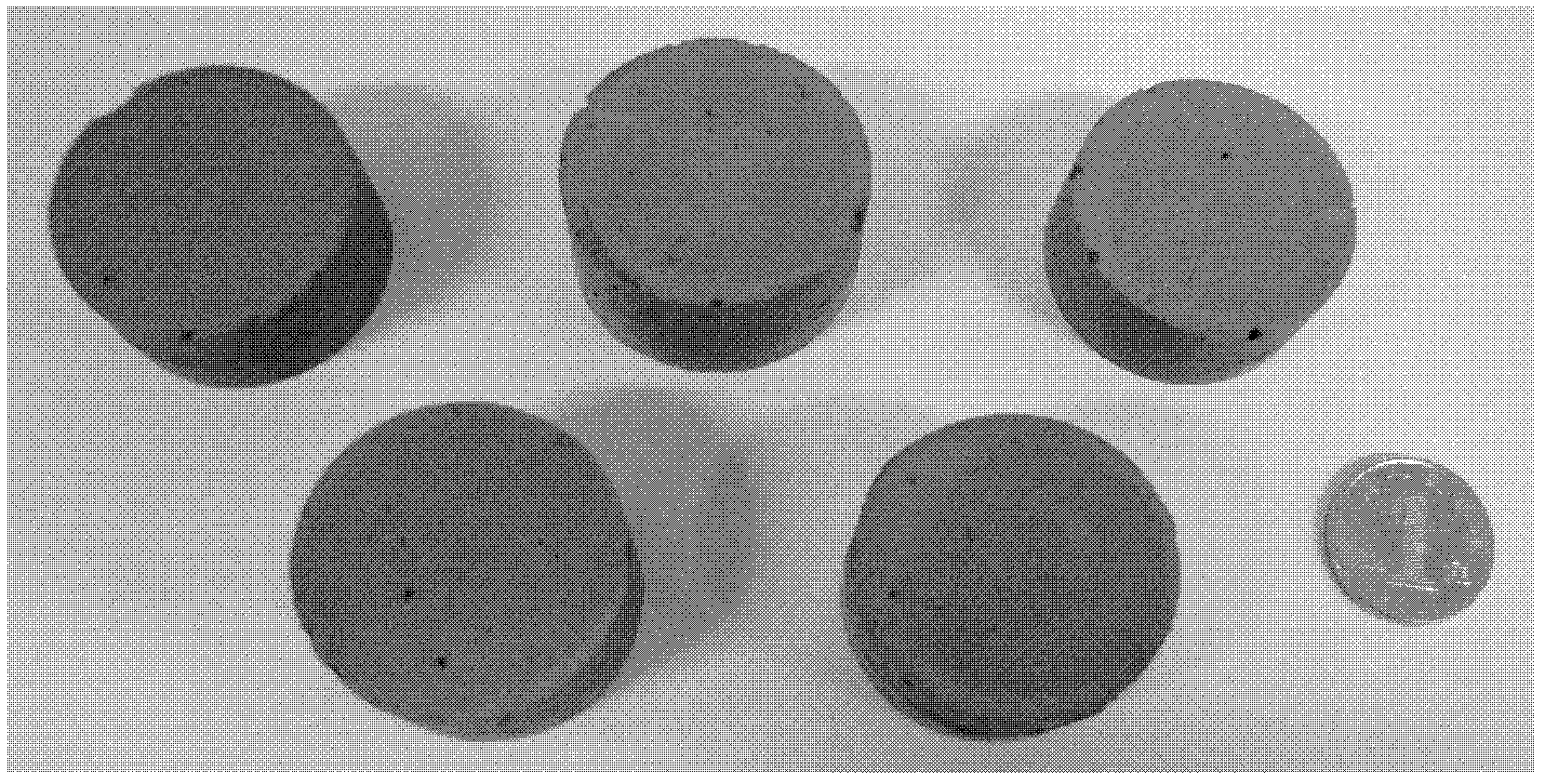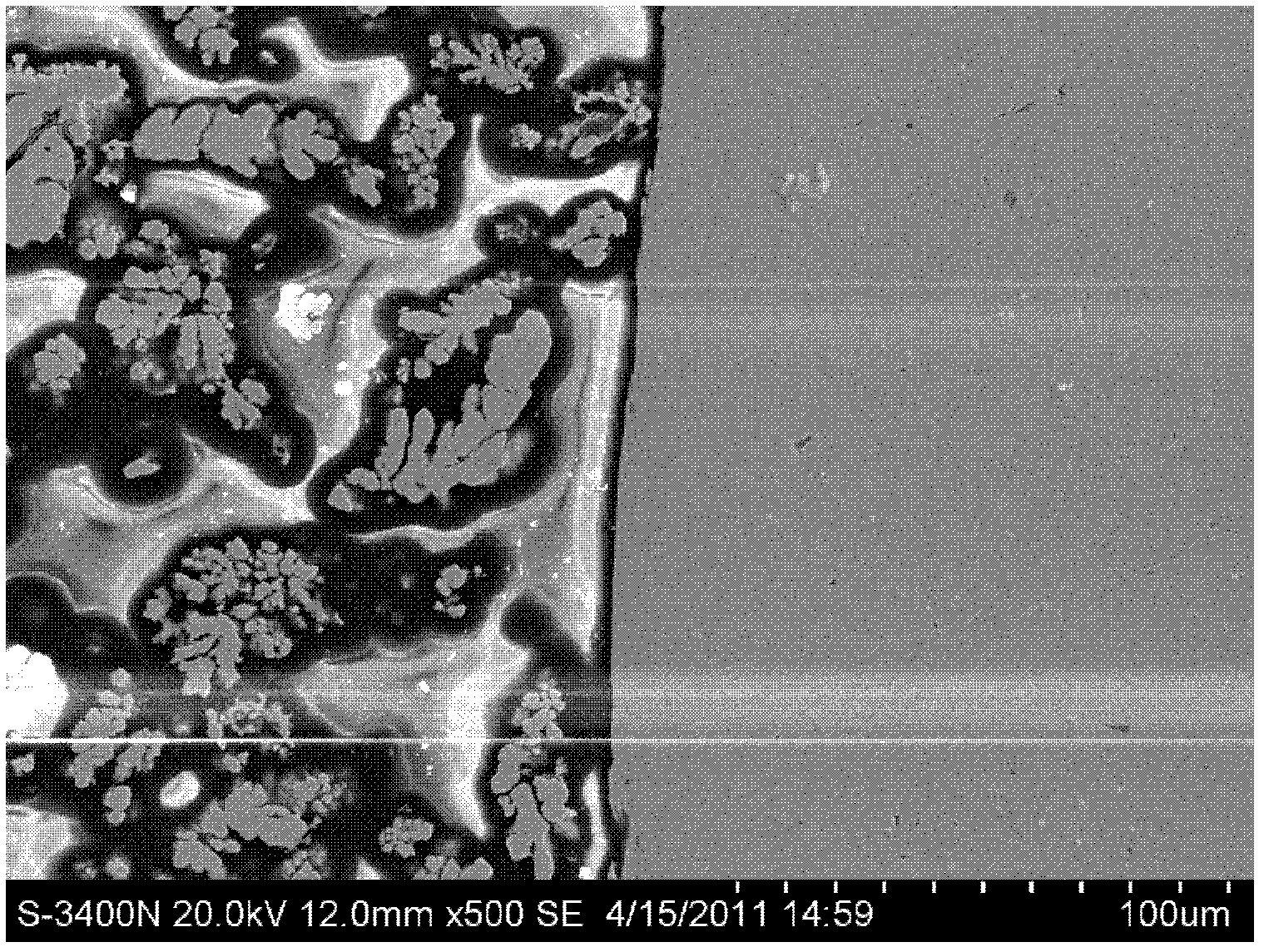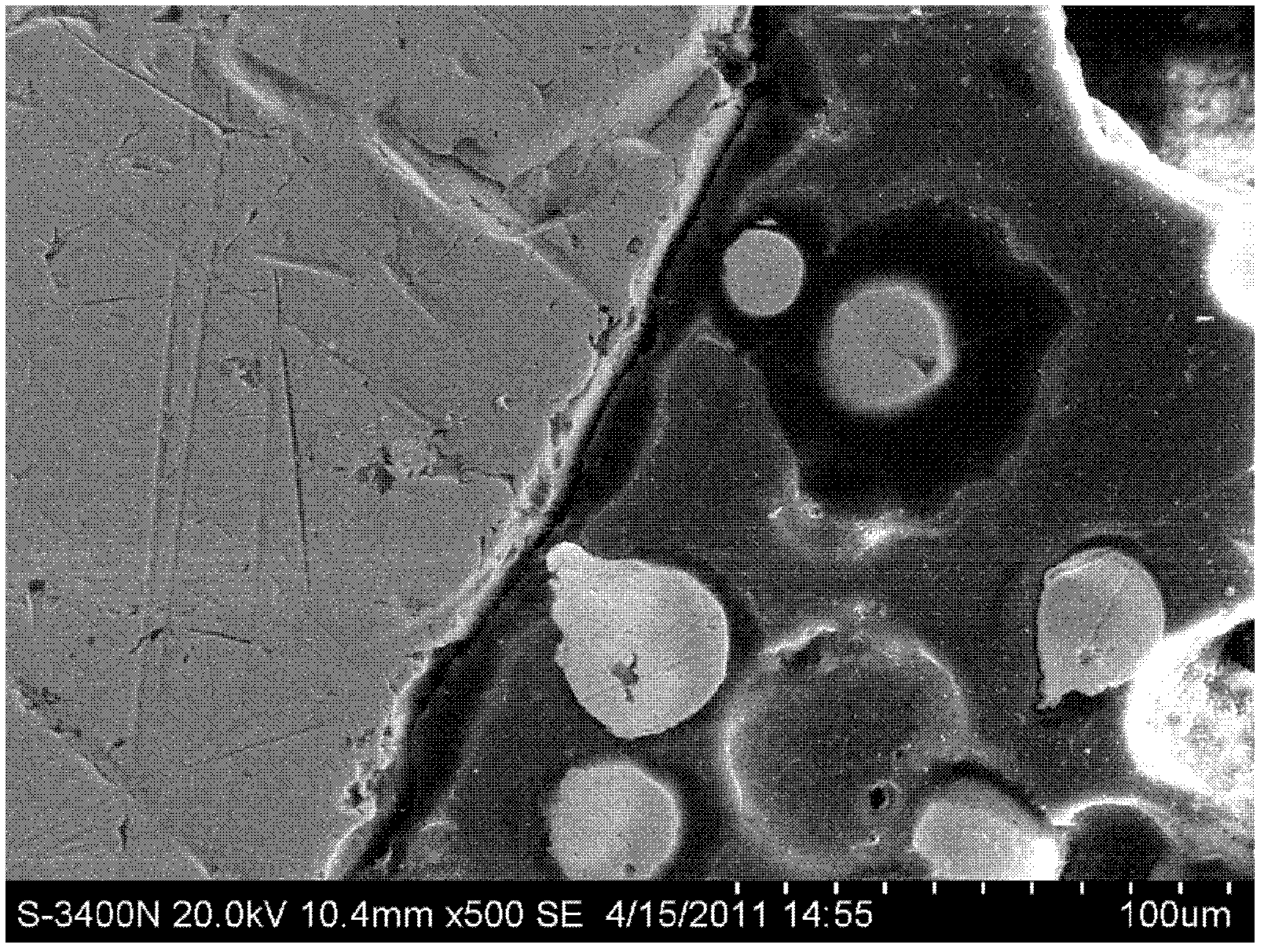Conducting resin for scanning electronic microscope and preparation method thereof
An electron microscope, conductive resin technology, applied in the field of material processing, can solve problems such as high cost, sample surface damage, and inability to sample chemical analysis.
- Summary
- Abstract
- Description
- Claims
- Application Information
AI Technical Summary
Problems solved by technology
Method used
Image
Examples
Embodiment 1
[0039] In order to make plastics reach the purpose of conduction, the present invention uses raw materials: epoxy resin is as base material, ethylenediamine is as curing agent, and silver clad copper powder is as conductive particles (metal silver 18%, metal copper 82%; Particle size is diameter 30 ~50μm). Required experimental utensils: glass rod, medicine spoon, polishing liquid, polishing cloth, plastic cup, 5 cylindrical molds, and 5 copper sheets to observe the internal structure, electronic balance. Specific methods include the following:
[0040] 1. Weigh 80g of epoxy resin, 8g of ethylenediamine, and 160g of silver-coated copper powder with an electronic balance, and place them in three identical plastic cups.
[0041]2. Add ethylenediamine to the plastic cup filled with epoxy resin and stir well at the same time.
[0042] 3. Slowly add silver-coated copper powder, stirring while adding, to prevent too fast curing into agglomerates, resulting in uneven dispersion of ...
Embodiment 2
[0050] In order to reduce the cost and make the experiment more economical, the present invention can also replace the expensive silver-coated copper powder with relatively cheap tin-silver-copper powder. Experimental raw materials: base material epoxy resin, curing agent ethylenediamine, conductive particle tin-silver-copper powder (metal silver 3%, metal copper 0.5%, 96.5% metal tin; particle size is 30-50 μm in diameter), the required experiment Utensils: glass rod, medicine spoon, polishing liquid, polishing cloth, plastic cup, 5 cylindrical molds, 5 copper sheets to observe the internal structure, electronic balance. Specific methods include the following:
[0051] 1. Weigh 80g of epoxy resin, 8g of ethylenediamine, and 160g of tin, silver and copper powder with an electronic balance, and place them in three different plastic cups.
[0052] 2. Add ethylenediamine to the plastic cup filled with epoxy resin and stir well at the same time.
[0053] 3. Slowly add tin, silve...
PUM
| Property | Measurement | Unit |
|---|---|---|
| Diameter | aaaaa | aaaaa |
| Resistivity | aaaaa | aaaaa |
| Resistivity | aaaaa | aaaaa |
Abstract
Description
Claims
Application Information
 Login to View More
Login to View More - R&D
- Intellectual Property
- Life Sciences
- Materials
- Tech Scout
- Unparalleled Data Quality
- Higher Quality Content
- 60% Fewer Hallucinations
Browse by: Latest US Patents, China's latest patents, Technical Efficacy Thesaurus, Application Domain, Technology Topic, Popular Technical Reports.
© 2025 PatSnap. All rights reserved.Legal|Privacy policy|Modern Slavery Act Transparency Statement|Sitemap|About US| Contact US: help@patsnap.com



